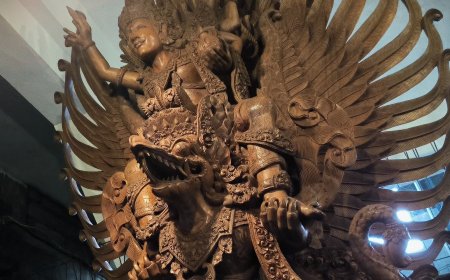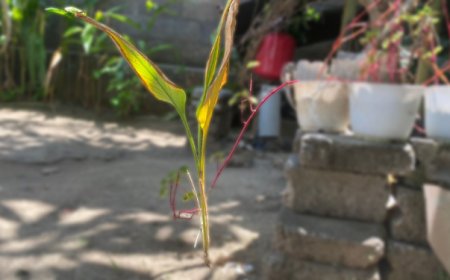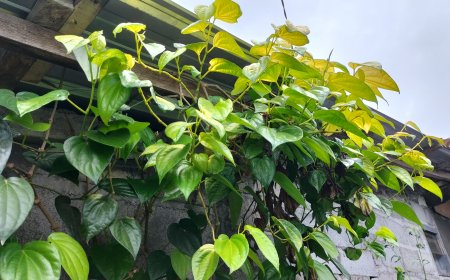Tabia Bun, The Secret Healing of Epilepsy from Bali's Hidden Natural Wealth
Tabia Bun is a plant that plays a significant role in traditional medicine and religious ceremonies. The ancient manuscript, Lontar Usadha Taru Pramana, mentions that Tabia Bun is used to treat epilepsy. This plant is also utilized in the treatment described in Lontar Usadha Tiwang, addressing conditions like Tiwang Asu and shoulder pain. This reflects the natural richness and traditions of Bali, crucial for preserving both health and the environment for our benefit.
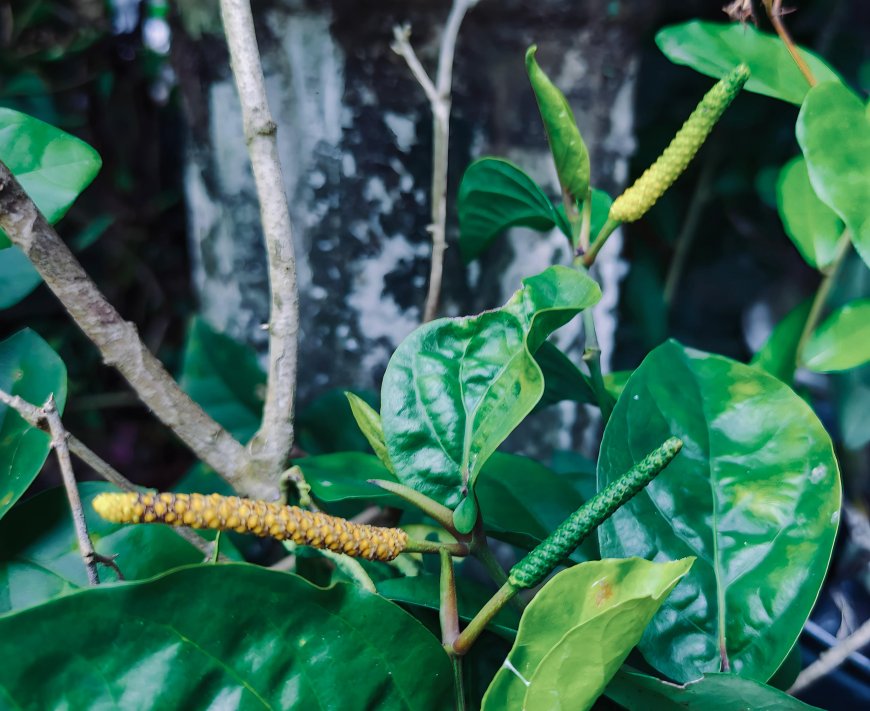
Indonesia, a land rich in natural diversity, holds various secrets of plants that play a significant role in traditional medicine. Among these plants, there is one that may not be widely known outside of Bali, namely Tabia Bun, also known as Tabia Dakep or Piper Retrofractum in Latin. However, Tabia Bun is not just an ordinary plant; it is also an intellectual treasure owned by the Balinese community.
Tabia Bun is not a foreign name to the people of Bali. This plant is not only recognized but also an integral part of various aspects of Balinese culture and rituals. Tabia Bun can be found growing naturally in various places, from temple walls, courtyards, to the entrances of houses made of materials like concrete, bricks, or volcanic stone. Furthermore, this plant can thrive on both dead and living trees.
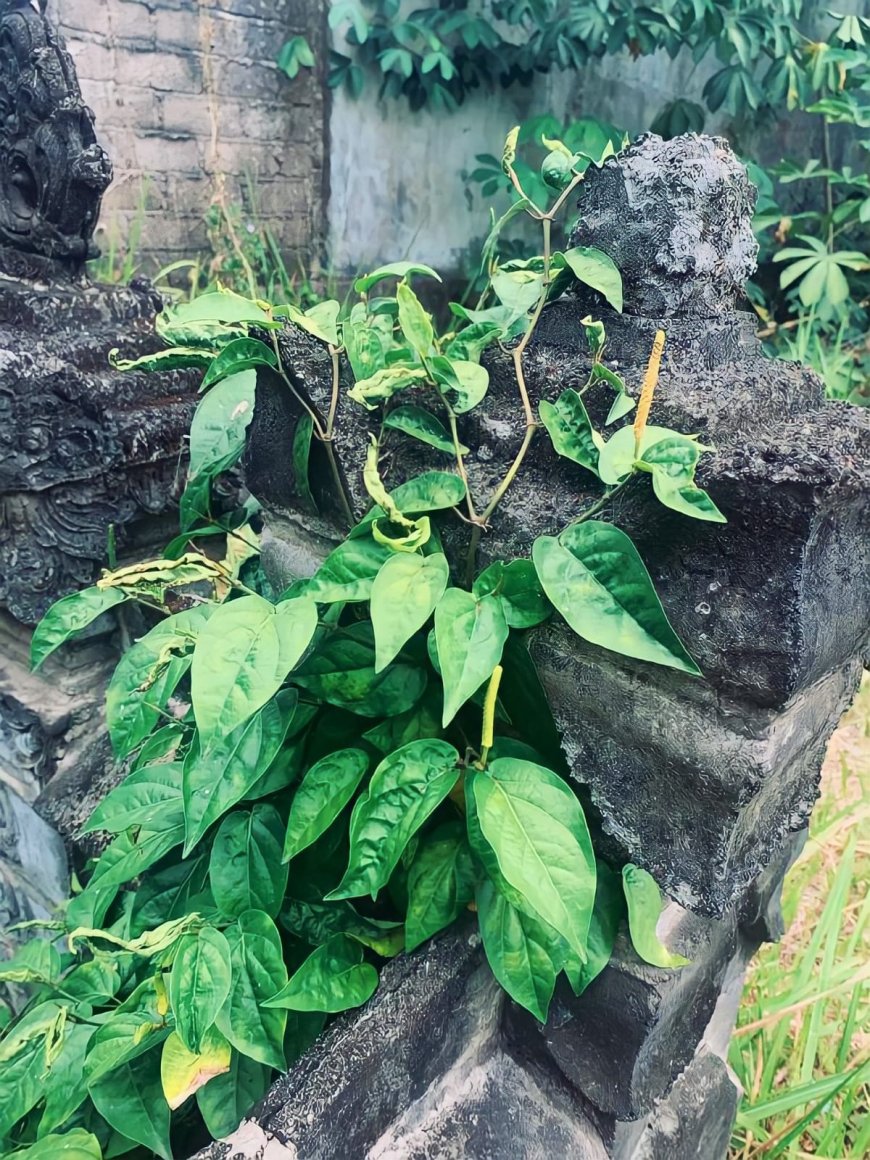
Tabia Bun Grows on Temple Walls (Photo Source: Personal Collection)
The presence of Tabia Bun in Balinese culture is closely linked to the making of offerings, especially in purification ceremonies known as "banten prayascita." In Bali's rich tradition of rituals and beliefs, Tabia Bun holds significant symbolism in the process of cleansing and purifying spaces and individuals. The banten prayascita ceremony itself is a spiritual celebration used to cleanse the soul, eliminate sins, and begin anew with purity and harmony with the universe. In this context, Tabia Bun is not just a plant but also a profound spiritual manifestation, tightly binding humans to nature and a tradition that has been enriched over centuries.
However, Tabia Bun, as revealed in the ancient manuscript called "Lontar Usadha Taru Pramana," is not only an essential element in religious ceremonies but also recognized as a treatment for epilepsy. Lontar Taru Pramana, as a highly detailed guide to natural remedies, introduces the characteristics of Tabia Bun, its usable parts, and its special benefits. In the overall context, together with "Lontar Usada," another ancient manuscript that plays a key role in traditional Balinese medicine by identifying various types of diseases, they harmoniously provide a more comprehensive insight into Bali's medical heritage.
In the Lontar Taru Pramana manuscript, it is written, "Titiang tabia bun daging panes, akah babakan panes, don titiange anggen loloh ayan. Ra kapkap mica, lunak tanek, temu tis 2 sisir." From this excerpt, we can understand that Tabia Bun has hot flesh characteristics, and its roots and bark are also hot, while its leaves can be used in herbal remedies or epilepsy treatment when mixed with old pepper leaves, tamarind residue, and two slices of turmeric.
The processing of Tabia Bun itself is not difficult. These ingredients are finely ground, then squeezed, filtered, and mixed with water to make a drinkable concoction. It's important to remember that traditional treatments like this require consistency. There is no instant cure, the key is to continue use regularly.

Tabia Bun Concoction (Photo Source: Personal Collection)
However, the story of Tabia Bun doesn't end here. Tabia Bun is also often used as a crucial component in treating various specific diseases, as can be found in the classical manuscript "Lontar Usadha Tiwang". Tabia Bun helps alleviate the symptoms of "Tiwang Asu" disease, which feels like being torn apart. In the making of its medicine, it collaborates with other natural ingredients like turmeric, Tabia Bun, Trikatuka, and Kameri meat. The treatment process involves grinding and applying, providing relief from pain and comfort to those suffering from this illness.
Furthermore, Tabia Bun is also used in treating shoulder pain that feels uncomfortable which is also found in the Lontar Usadha Tiwang. In the making of its medicine, it collaborates with other natural ingredients like Tabia Bun, Bras Barak (red rice), Sandalwood, and Orange. The treatment process involves using this mixture as a powder applied to the aching shoulder. Thus, Tabia Bun not only serves as an integral part of traditional Balinese medicine but also plays a role in body care to alleviate diseases and ensure well-being. This is an example of how the Balinese people value the wealth of nature and their traditions in maintaining health, even in the midst of rapid modern medical developments.
In the Lontar Tutur Kuranta Bolong, Tabia Bun is also mentioned as one of the ingredients in the medicinal concoction for various diseases, as written in this quote “canging, padāng lephas, kulit talūh syap, pinipis, wdaknā. Pamāpas, rare glêm, kilākanti, tabya bhūn, wenya wrêk lammā, pipis, tāhapāknā. Ta, rare mārlupā lêsu, uwon, śa, don liligundi, bras, ckuh, isin tingkih, triktukā, pinipis, wdaknā, mwang makā wdak sukunya, śa, bras barak, bwah base, maświ, kasunā jangū, wdaknā. Mwah makā sasingêlnya, śa, don bawūs, triktukā, wdāknā. Ta, rare tan kwaṣā mangān, śa, paku nasi, we iraggān ktān gajih, ra, bawwang tambus, pinipis, tahap. Mwah, śa, kasimbukkan “.
The translation is "Cogon grass, chicken eggshells, are crushed for powder. Remedies for children's ailments include kilakanti, tabia bun, annual palm sap, crushed for urap medicine. Remedies for tired and lethargic children include liligundi leaves, rice, kencur (a type of ginger), candlenut, garlic, and jangu (a type of plant), crushed for powder. And for foot powder, the ingredients include red rice, betel leaf, masui (a type of plant), garlic, and jangu. The remedy for earplugs consists of bawus leaves, garlic, and jangu. Remedy for children who have poor appetite, the ingredients are pakis nasi (fern), ketan gajih (glutinous rice), mixed with bawang tambus (shallot), crushed to be swallowed. There are other remedies, namely kasimbukan”.
Furthermore, other quotes also mention that "têng, śa, bwah paparon, tabyā būn mābakar, nanghing akahnya, ring miccā, goreng sammi, wus ratêng, lisahaknā rare ikā. Ta, rare koreng makāwāknya, śa, wwading madhuri putih, kasunā jangū, kasunā jangu goreng ring lêngā tanūsan, lisahakna. Ta, rare koreng, śa, bwah crêmme, ra, triktukā we wrêwwak lammā, wdaknā. Ta, rare koreng, śa, carmmāning kwañji, lublub dapdap, bawang tambus, pinipis, wūs ratöng, ḍaḍahin, kcirin lêngis tanūsān, sampun puput, olesaknā. Wus tuh, mwah wdaknya, śa, wwadi kwañji, ra, triktukā, wdakna. Ta".
The translation is "Prepared with paparon fruit, burnt tabia bun root, and pepper. This concoction is fried, and once cooked, it is applied to the patient's body. It is a remedy for children suffering from skin infections. The suggested ingredients are white meduri root, garlic, and jangu. These ingredients are fried with coconut oil and used as a topical treatment. For children suffering from skin infections, the recommendation is kwanji bark, dedap tree bark, and tambus onion. These are crushed and mixed with coconut oil, then used as a topical remedy once cooked. After the skin infection has healed, the patient is given a powder made from kwanji root, garlic, and jangu".
Indonesia may be famous for its natural beauty, but more than that, it holds a treasure trove of valuable traditional knowledge. Tabia Bun is a real-life example of how a plant thriving on the island of Bali can become a savior in traditional medicine, offering hope to those who rely on local wisdom to maintain their health. Tabia Bun, a once-hidden secret, teaches us that sometimes the best answers to our health may be right in front of us, in the diversity of the natural world surrounding us.
The ancient tradition that is still relevant and holds immeasurable value is a real example of Indonesia's natural wealth that should be preserved. We as humans have a responsibility to understand and utilize this treasure wisely, in line with the principles of environmental conservation that will ensure nature will also preserve and provide for us. Let's protect our environment so that we can continue to experience its blessings.





































